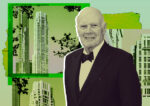Trending
Who got it right and who got it wrong in predicting the 2011 market

In real estate, everybody has an opinion, as readers of The Real Deal perhaps know best (see our infamous comments section). And at the start of every year, heavyweights in residential and commercial real estate weigh in, attempting to foretell what the mysterious market will bring. Last year was no different— sometimes they were wrong, sometimes they were mostly right, and sometimes they were dead-on. Without further ado, here’s 2011’s real estate predictions parsed— with the benefit of hindsight.
Prediction: “In 2011, we expect hotel deal volume to increase by 90 to 130 percent over last year’s levels… the increase in transaction volume [is due to] the dramatic recovery in revenue per available room, or revpar, continued improvement in the debt markets, investors’ intention to sell assets before the 2007-2012 loan terms expire, and currency movements.”
Soothsayer: Arthur Adler, CEO-Americas for Jones Lang LaSalle Hotels.
Verdict: Thumbs sideways, but pointing slightly up. Hotels traded at an even quicker pace than Adler anticipated, according to Real Capital Analytics’ Ben Carlos Thypin. “[Real Capital] tracked over $3 billion in hotel deal volume in Manhattan in 2011 and the finalized total may be higher. While JLL’s prediction ended up being a little conservative, their rationale for predicting such a dramatic increase was right on the money,” Thypin told The Real Deal.
Prediction: Mortgage rates for 30-year fixed-rate loans will be around 5.5 percent at the end of 2011.
Soothsayer: Mortgage Bankers Association.
Verdict: Thumbs down. According to the most recent numbers from Freddie Mac, 30-year fixed-rate mortgages finished out 2011 at an average of 3.95 percent. But staggeringly low mortgage rates lasting through 2011 is not the sort of trend anyone could have predicted, according to appraiser Jonathan Miller of Miller Samuel. Last year at this time there was “trepidation about mortgage rates rising in the second half of 2011,” he said. “I don’t think anybody anticipated the downgrade [of the U.S. credit rating]… that was the biggest error of foresight for 2011.” But low mortgage rates are not all positive, in fact, the short-term payoff — increased incentive to buy and increased volume in refinancing — doesn’t account for the long-term issues the low rates present, Miller said. “In the long run, record low rates can hurt housing because until rates go up mortgage underwriting is so tight. Instead of looking for triple A borrowers, they are looking for quadruple A.”
Prediction: Residential sale growth will be less than 5 percent, and the very high-end will lead the residential market out of the slump.
Soothsayer: Frederick Peters, president of Warburg Realty Partnership, in The Real Deal’s real estate predictions for 2011.
Verdict: Thumbs up. “I think that was pretty much spot-on,” said Noah Rosenblatt, publisher of UrbanDigs, a Manhattan real estate data site. “In 2011, we saw a continuation of a progressive re-flation in median price trends since the lows in 2009,” Rosenblatt said. The slight overall price growth was propelled by the high-end, which began seeing an increase in March, and peaked in June, he said. But fears that “another shoe would drop,” kept prices from growing too rapidly, and similar fears will likely keep a cap on growth this year, he said. Perhaps most prescient was Peters’ statement that the high-end would lead the market. “That was dead-on,” Rosenblatt said. “I don’t think I would have gone on record in 2010 saying that.” As it turned out, the year was also rife with high-end sales, such as the sale of Sandy Weill’s 15 Central Park West penthouse for $88 million, and a condominium at The Plaza for $48 million, to Russian composer Igor Krutoy in March. As The Real Deal reported, owners in the Time Warner Center were reportedly turning down offers of more than $10,000 per square foot.
Prediction: There is enough room in the real estate industry for specialists, such as Massey Knakal Realty Services, to grow their business into the retail sector.
Soothsayer: Mary Ann Tighe, CEO of CBRE for the tri-state region, speculated that Massey Knakal’s new retail division would be a success. “They are equipped to know what retail can work where,” Tighe said at last year’s Real Estate Board of New York banquet.
Verdict: Thumbs up. Massey Knakal’s new retail division, even with a somewhat unorthodox approach, made a strong start in 2011. According to the firm, they currently have 56 exclusive retail listings. “I think that’s a significant amount of exclusive listings for a new shop,” said Robin Abrams, executive vice president at Lansco. “Because they have the existing reputation to go out and acquire business, and I think in 2011 they were successful in doing that.” But the coming year will show how well the firm’s unique approach, wherein brokers have their own territories, works out, Abrams said. “They have a different twist… it’s challenging because landlords might have properties in different areas,” meaning the traditional approach of developing relationships with landlords will work differently for Massey Knakal. “We’ll have to see how they deal with those things, how brokers will support one another when they are outside of their territory.”




